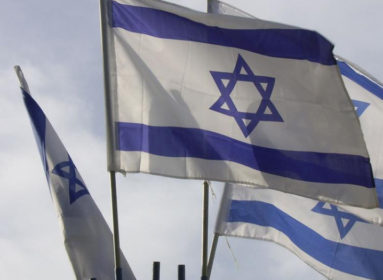The pricey Iron Dome proves itself priceless
By Sean Savage and Israel Hayom/JNS.org
 With hundreds of rockets raining down from Gaza, Israel’s Iron Dome missile defense system has saved an untold number of lives thanks to Israeli technological ingenuity and U.S. support.
With hundreds of rockets raining down from Gaza, Israel’s Iron Dome missile defense system has saved an untold number of lives thanks to Israeli technological ingenuity and U.S. support.
According to the figures from the Israel Defense Forces (IDF), since Operation Pillar of Defense began Nov. 14, the Iron Dome system has intercepted some 300 rockets, with an 85-percent interception success rate.
“The system works incredibly well, even beyond our expectations,” said David Schechter, a top official at Rafael Advanced Defense Systems, the Israeli defense company that designed and manufactures the system.
One of the keys to success for the Iron Dome system is that it isn’t designed to shoot down every rocket, but only those that threaten civilian areas.
“They didn’t design a system that would shoot down everything,” Jeff White, a military analyst with the Washington Institute for Near East Policy, told Bloomberg News. “They designed a system that would shoot down threat rockets and it works pretty good.”
The Iron Dome provides city-sized coverage against rockets with ranges between 5-70 km using its highly advanced radar system. The first Iron Dome battery was deployed outside of Beersheba in March 2011. Currently there are five batteries deployed, with the latest one coming two months ahead of schedule on Nov. 17 to protect Tel Aviv. Five more batteries will be deployed in the upcoming years.
The Iron Dome system does not come without steep financial costs, especially in comparison to Hamas’s crude rockets. Each battery costs $100 million and each interceptor missile costs $50,000. By contrast, the cost to the Israeli economy of each civilian fatality is estimated to be $1,200,000.
While initially funded by Israel, the U.S. has provided most of the funding for additional batteries. Since 2010, the Obama administration and Congress have provided $205 million with an additional $70 million on its way. According to a White House press release, Israeli Prime Minister Benjamin Netanyahu called President Barack Obama Nov. 16 and expressed “deep appreciation” for U.S. investment in the system.
The Iron Dome is part of a larger Israeli missile defense system. Israel’s other systems include the upcoming David’s Sling, designed for medium range rockets and missiles, and the Arrow, designed to intercept longer-range missiles such as from Iran.
A number of IDF officials were involved in the decision to deploy the fifth Iron Dome battery to the Tel Aviv area ahead of schedule, though the main force pushing the move was Israel Air Defense commander Brig. Gen. Shahar Shohat.
For the installation and command of the fifth battery Nov. 17, Maj. Itamar Abo was called away from his university studies, having finished commanding one of the other batteries just a month and a half ago. The new unit involves more advanced technology, so Abo and his team were given updated training.
Soon after the installation of that new battery, it intercepted its first rocket. Abo said, “The feeling during the interception is incredible, especially in the Dan region [around Tel Aviv] with so many citizens.”
“It demands a high level of professional concentration,” Abo continued. “There is a sense [of concentration] among all the people involved, from the low-ranking technicians to the warriors that actually shoot, and it is rare to actually see the missile hit the target. There is nothing that makes us happier, however. The battery has been very successful up to now and we hope it will continue to be successful in the future.”
Due to its more advanced technology than the other four units, the fifth Iron Dome is better able to deal with Fajr and eight-inch rockets launched from Gaza. The sixth Iron Dome is slated to be ready by the middle of 2013.
Israeli Defense Minister Ehud Barak visited the Iron Dome battery on Sunday in the central Dan region. He called it “an exceptional achievement by both the Air Defense Command and manufacturers.”
“No other army in any country in the world has a system like it; no other civilian population has this protection,” Barak said. “It is true that the threat against us is unique, but such abilities and defensive achievements are out of the ordinary.”
“With the Iron Dome and the developments that are planned for it, we have a basic ability to protect the state of Israel against most threats of both short and long-range missiles,” the defense minister added. “It will take a few years and a few million shekels, but we will get there.”







 Southern New England Jewish Ledger
Southern New England Jewish Ledger














